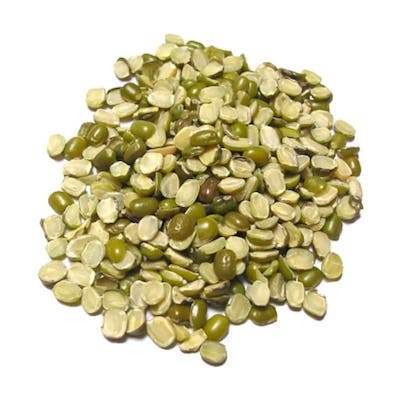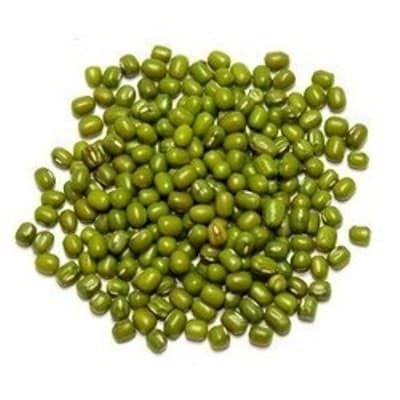This article gives a very simple recipe for cooking dal, invented by my mom. It's easier than the recipes I found on the internet, and easier than the recipes that my friends use. This recipe is great if you want to reduce the time you spend cooking or if you're new to cooking and want to start simple.
But before that, I'll give two disclaimers:
- This recipe tastes good, but you can get slightly better-tasting dal by putting in more effort. However, I like this recipe, I'm not picky about what I eat, and I want to save time, so I'll stick to this article's recipe for the foreseeable future.
- My mom often uses a better recipe. Don't judge her cooking skills based on this article's recipe!
What is dal?¶
I'll start from the basics for non-Indian readers of this article.
Dal is basically a traditional Indian dish where you boil seeds (from the Leguminosae family of plants) in water and add spices.
You can't use any seeds because only some species of seeds taste good as dal. These are some of the popular ones (these are Indian names; I don't know what they're called in English):
- Toor (a.k.a. Arhar)
- Yellow moong (a.k.a. yellow mung)
- Green moong (a.k.a. green mung)
- Yellow/Orange masoor
- Black masoor
- White/Yellow urad
- Black urad
- Chana
All of these taste different, but the recipe for cooking them is almost the same, so you can get a lot of variety without learning much cooking.
The black/brown/green ones have their seed coat, and the white/yellow/orange ones do not.
You can find bags of these seeds in Indian stores. In the US, you'll find 2-pound and 4-pound bags (0.91 kg and 1.81 kg). All these seeds are dicotyledonous, i.e., they have two cotyledons. To cook dal, make sure you buy seeds that are already split into two parts.


Dal is a very inexpensive source of food. In Champaign, Illinois, a 2-pound bag of dal costs between $3 and $3.5. Half a glass of dal seeds is a meal-for-two since they absorb water and swell up when they're cooked.
Dal is a good source of protein. It has much less protein than meat or eggs, but it has enough protein that you won't get protein deficiency if you eat it once a day. (Though if you're looking to build serious muscle, like if you're bodybuilding, then dal alone is unlikely to suffice).
Most people in India eat dal with either rice or roti (roti is like an Indian version of tortilla). You can also eat it with toasted bread. I like rice with toor dal and black masoor dal and roti/bread with the other dals.
Ingredients and Utensils¶
- 1/2 glass of dal seeds
- water
- 1 teaspoon of cooking oil / butter / ghee
- 1/2 teaspoon salt
- 0.4 heaped teaspoon turmeric powder
- 0.4 heaped teaspoon coriander powder
- 0.2 heaped teaspoon red chili powder (optional)
- 1/2 teaspoon cumin seeds
- 1 pinch hing (a.k.a. powdered asafoetida)
- 0 to 1 teaspoon Garam masala (optional)
You need a pressure cooker to cook dal, because at higher pressures, the boiling point of water is more than 100°C (212°F), so dal will cook better and faster.
The amount of water you need depends on how thick you want your dal to be and what kind of seeds you're using. I usually use roughly:
- 1.75 to 2 glasses of water for toor dal.
- 2.5 glasses of water for green moong.
- 2.25 glasses of water for all other dals.
It's hard to measure 0.4 teaspoons of turmeric powder and coriander powder. So you can just mix them beforehand. I mixed 200 grams of turmeric powder, 200 grams of coriander powder and 100 grams of red chili powder and put it in a box. Now I just use 1 heaped teaspoon of this mixture each time I cook dal.
I haven't cooked black masoor dal yet, and my mom said that this recipe isn't very appropriate for black masoor. This recipe works well for black urad dal, but you'll get much better results with a better recipe (like Dal Makhani). You should soak black urad dal in water for at least 1 hour (preferably several hours) before you start cooking. The amount of water used for soaking plus the amount added afterwards should equal around 2.25 glasses.
I like to mix yellow moong with orange masoor (2:1 ratio) and white urad and chana (3:1 ratio). Other than these, I don't mix different kinds of seeds.
Recipe¶
Basically you sautée cumin and hing for a few seconds in a pressure cooker, then add water, dal, spices, salt, and then close the pressure cooker's lid and wait. Here are the steps in more detail:
- Put a pressure cooker on the stove and set the heat to medium. Start the exhaust fan.
- Add a teaspoon or two of cooking oil / butter / ghee.
- Add 1/2 teaspoon of cumin seeds and a pinch of hing to the oil / butter / ghee (You may want the oil to heat up before adding these. I don't know if waiting makes a difference.)
- Fill a glass with water. If the water is warm/hot, cooking will take less time.
- Wait for the cumin seeds to start splattering or bubbling. Then wait for 15 to 90 seconds. Then add the glass of water.
- Set the stove to high heat (the highest setting).
- Add 1/2 glass of dal.
- Add the rest of the water.
- Add 1/2 teaspoon salt.
- Add turmeric powder, coriander powder and (optionally) chili powder.
- Stir with a spoon.
- Close the lid of the pressure cooker and wait for the cooker to shout.
- After it shouts, set the stove to medium heat.
- Turn off the stove after 8 to 10 minutes. (The cooker may shout a few times while the stove is on; that's fine.) For toor dal, 7 minutes may suffice. For dals with seed coat, you can maybe go up to 12 minutes if you want it softer.
- Wait for 20 to 30 minutes for the cooker to cool down.
- Remove the cooker's whistle and open the lid.
- (Optional) Add at most 1 teaspoon garam masala.
- (Optional) Add butter / ghee / cream.
- Stir the dal with a large spoon to make it homogeneous.
Tweaking and Troubleshooting¶
You may want to try varying the amount of spices and water to your preferences.
If you find that the dal is too thick/dry after opening the cooker, you can fix it: Add some more water, turn on the stove to high heat and bring it to a boil without closing the lid of the pressure cooker. As soon as it starts boiling, turn off the stove.
Dal doesn't have much fat. You can fix this by adding butter or cream (people trying to lose weight may disagree that 'fix' is the right word here). This also improves the taste.
The cooking time after the first shout is independent of the amount of dal you're cooking. This is because the rate of cooking only depends on the temperature, and that's fixed to the boiling point of water. If you increase the stove's heat, the food will still take the same time to cook; the extra thermal energy will just be used to convert water to steam, i.e., wasted.
Credits: Thanks mom for this awesome recipe! Thanks Tanvi Bajpai for suggesting a good title.